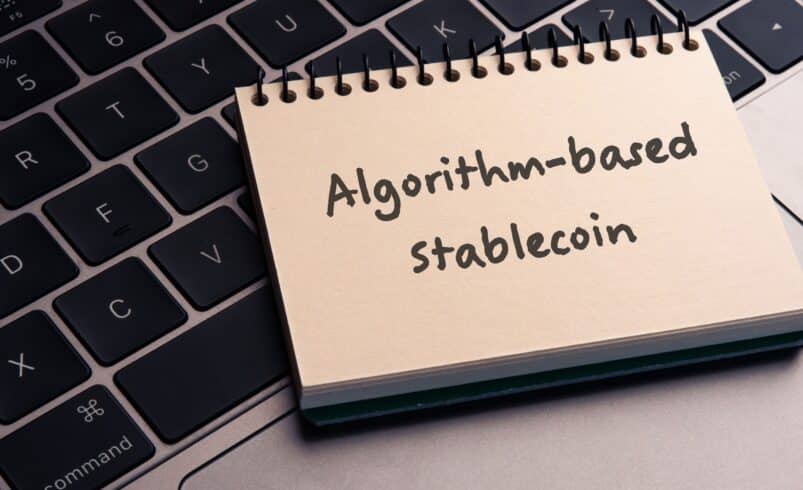What are Algorithmic stablecoins? A Comprehensive Beginners Guide

The sudden downturn of the Terra-Luna system in May 2022 resulted in a significant loss, amounting to over $40 billion, sparking intense discussions on algorithmic stablecoins. The notable detachment of TerraUSD’s value from its intended peg last year profoundly impacted the financial sector, leading to heightened scrutiny and skepticism toward algorithmic stablecoins. This cryptotrademastermind guide aims to elucidate the foundational principles of algorithmic stablecoins and the associated risks.
What exactly are algorithmic stablecoins?
Algorithmic stablecoins are digital currencies that use computer algorithms and smart contracts to regulate their value, often aligning it with another asset, for example, the U.S. dollar. Unlike centralized stablecoins like Tether, which have tangible asset backing, or decentralized ones like MakerDAO’s DAI, which holds excessive cryptocurrency collateral, algorithmic stablecoins tend to operate with limited or no collateral. Their value does not stem from an underlying asset reserve.
A system of balancing tokens or “shares” enables these stablecoins to counteract market fluctuations and retain their designated peg. In the context of the Terra blockchain, the TerraUSD stablecoin engaged with the governance token Luna to stabilize its value. If TerraUSD’s valuation surpassed $1, Luna token holders stood to benefit by trading their Luna for TerraUSD. On the other hand, when TerraUSD’s value decreased, trading it for Luna became advantageous, reducing its availability and, consequently, elevating its price.
The robustness of algorithmic stablecoins is intrinsically linked to market appetite. A decline in demand can jeopardize the entire system. Additionally, these stablecoins depend on third-party investors to execute price-stabilizing transactions, which can add an element of risk. However, some users are drawn to the transparency and decentralized nature of algorithmic stablecoins since they operate based on openly accessible code without regulatory interference.
Understanding Algorithmic Stablecoins and Their Categories
To gain a comprehensive grasp of algorithmic stablecoins, it is crucial to categorize them based on their operational principles and features.
Rebasing Algorithmic Stablecoins: These stablecoins operate on flexible ERC-20 tokens, the quantity of which is not constant and is periodically revised. The Ampleforth protocol is a notable example that employs a rebasing mechanism, adjusting the token quantity depending on its price trajectory.
Seigniorage Algorithmic Stablecoins: This category typically involves two distinct cryptocurrencies: the stablecoin and the seigniorage shares. A prominent example in this category is Basis Cash, which modifies its quantity to maintain the BAC price consistency, along with Luna/UST.
Fractional Algorithmic Stablecoins: These stablecoins integrate the attributes of both purely algorithmic and entirely collateralized stablecoins. Their goal is to circumvent excessive collateralization while minimizing custodial hazards. Frax is a case in point, adopting a semi-collateral approach.
Challenges and Attributes of Algorithmic Stablecoins
Algorithmic stablecoins possess a distinct combination of challenges and attributes that financial enthusiasts should know. These digital currencies epitomize decentralization, functioning exclusively via transparent code, devoid of regulatory intervention. Their operation without needing tangible assets minimizes user errors. It incorporates the seigniorage notion in the digital currency realm, enabling the evaluation of gains or losses linked to digital currency production.
However, these stablecoins are full of weaknesses. Being uncollateralized digital entities, they leverage algorithms and market stimuli to adhere to a reference asset’s price, making them susceptible to de-pegging risks. Their optimal function relies on a threshold demand level and should demand plummet beneath this, the system’s integrity is jeopardized.
Moreover, during tumultuous periods, their stability can be adversely affected. For instance, the TerraUSD stablecoin faced a de-pegging episode when its price dipped below $1, which subsequently caused a drastic reduction in Luna’s price, the managing token of the Terra blockchain platform.
The Regulatory Framework for Algorithmic Stablecoins
While algorithmic stablecoins’ decentralized and transparent nature might be alluring, it is essential to recognize their operation within a largely non-regulated domain.
This absence of a regulatory framework has its pros and cons. While it fosters innovation and market adaptability, it simultaneously means diminished investor safeguards. The incident with TerraUSD, which saw its value considerably decline from the $1 mark, underscores the latent risks of algorithmic stablecoins, prompting discussions about heightened regulatory measures.
DISCLAIMER: It's essential to understand that the content on this page is not meant to serve as, nor should it be construed as, advice in legal, tax, investment, financial, or any other professional context. You should only invest an amount that you are prepared to lose, and it's advisable to consult with an independent financial expert if you're uncertain. For additional details, please review the terms of service, as well as the help and support sections offered by the provider or promoter. While our website strives for precise and impartial journalism, please be aware that market conditions can shift unexpectedly and some (not all) of the posts on this website are paid or sponsored posts.









